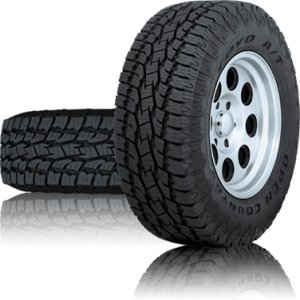Any time of the year is a good time to have plenty of tread, but in winter never a truer word was said. Tyres and that all-important grip provided mean the difference between getting somewhere or not. One of the great conundrums of 4WD ownership is what’s right in tread design?
Most regular readers of the pages we write either here or in our social media offerings will know of our preference for “LT” or light-truck construction 4WD tyres because their durability and better steerability over standard “P” passenger car rubber sometimes referred to as “H/T” or highway-terrain. Here in South Australia we reckon that LT construction coupled to an “A/T” all-terrain pattern will usually be the best bet. In South Aussie we usually don’t suffer ridiculously muddy tracks, so the benefit of an “M/T” mud-terrain pattern will be largely lost.
In other parts of the country however the muddie might be of benefit, especially in places like the Victorian High Country, where water and hills go hand-in-hand.
Looking at all three patterns it’s pretty easy to see what the design-spec was. The H/T with its regular tread pattern, shallow tread depth (9mm) and narrow tread channels and sipes is clearly keeping an eye on the bitumen. Once it’s exposed to mud it’ll quickly choke and offer zero grip.
The A/T is better placed. With a more aggressive tread pattern with deeper channels (13mm), it’ll swallow and spit out all but the gooiest mud and retain some degree of mobility.
The M/T is really a specialist pattern, big tread blocks with massive voids and deeper channels (13-15mm) get down and bite in the slipperiest, providing important traction when the going is tough.
In terms of road noise the H/T wins hands-down, usually quiet as a mouse, the A/T will be marginally rowdier and the M/T plainly obvious both in and out of the vehicle.
Tyre makers have gone to great lengths in recent years to make noise a thing of the past. Looking at the tread shapes of the latest Bridgestone D697 A/T or their equivalent M/T the D674, or even the Toyo OPA/T 2, their A/T pattern and their OPM/T muddie, the tread blocks are shaped and aligned to ruffle the flow of air through the tread face and create a quieter tyre.
|
Bridgestone D697 |

Bridgestone D674 |

Toyo OPA/T |

Toyo OPM/T |
The other issue with M/Ts in the past was wet weather bitumen grip. Having a 2.5 tonne vehicle sitting on big aggressive tread blocks and chucked into a wet corner used to provide some fairly exciting times. Not so now, the more uniform and interlocking patterns afford much greater safety levels than before. They’re not perfect, but as a compromise tyre for tackling difficult trails in wet conditions as well as a run to work or the shops, a modern M/T can work.
No matter what tyre you select make sure it comes with an improvement in “Load Index”. Load Index is the only true barometer for tyre strength and if you can get a 120 loading or greater, you’ve gone a long way to making yourself puncture-proof. You’ll find that mysterious number on the sidewall, seen here in red LT265/75R16 123R. Here’s a link to a site that lists the Load Index amongst other useful information about tyre design http://en.wikipedia.org/wiki/Tire_code



